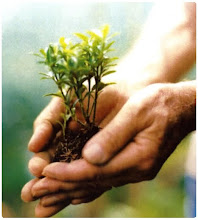With the constant expansion of cities and the reduction of rural landscapes, agriculture is becoming a major concern in urban communities. As city populations continue to grow, agricultural demands within cities become more difficult to meet and the idea of incorporating agriculture into the urban landscape is becoming increasingly relevant.
City farming is one solution which relies on very simple technique combining agriculture with city structures and can adapt to various environmental conditions. In Mumbai, India for example, one of the densest cities in the world, a man named Dr. R.T. Doshi has developed the idea of city farming and created a method that allows individuals to grow their own food in any available space (usually terraces and balconies) using as few resources as possible. These methods developed in response to Dr. Doshi's agricultural concerns including the high cost of farming in rural areas to provide for the cities, the cost of food subject to inflation in urban areas, the poor quality of many agricultural products, and the common usage of toxic chemical pesticides. His methods either resolve or avoid these concerns. Also, obtaining land in an urban setting is difficult as most land is more profitable if used for real estate development as opposed to vegetable gardens. Using Dr. Doshi's methods, however does not require land to achieve a thriving garden. It works simply with the city's structures as they stand.
This method requires only four basic materials: sugar cane waste from nearby juice vendors, used polyethylene bags originally for packing cement or fertilizer, compost, and a small amount of soil. All of these materials are either free or inexpensive allowing people of any financial situation to participate. The polyethylene bags are used as the growing container and are layered with shredded sugar cane stalks for support and drainage, compost, and then soil. After being soaked with water two or three times and allowed to dry out, the bags are then ready to support plant life. Dr. Doshi himself devotes 1200 sq ft. of terrace space to growing several fruit trees, vegetables, and cereals, proving that his method is in fact quite successful.
Overall, city farming effectively improves the urban environment by using underused spaces in the city, recycles organic waste, and increases economic activity.
In addition to simple city farming, the incorporation of agriculture in our city includes methods on much larger scales using more technologically advanced methods. This can include anything from rooftop farms to the complex vertical farms. Rooftop farming uses rooftop space for growing and is effective in yielding large quantities of food and is beneficial to the building as it acts as a thermal insulator. This method, however, poses the problem of installing a proper irrigation system. Another take on solving the issue of urban agriculture is the concept of the vertical farm which proposes creating farms within multistory building. These topics are further discussed in the blog entries Vertical Farming and Metropolitan Farmville.
In contrast to these methods, basic city farming, although on a much smaller scale, is much more universal as it is simple, inexpensive, and does not require elaborate irrigation system and technology to be effective.
Amina Lalor
References:
-"Economic Advantages," Greenroofs. http://www.greenroofs.com/Greenroofs101/economic.htm (accessed November 3, 2009)
-"Green Emirates," City Farming. http://www.cityfarming.in/undp.html (accessed November 3, 2009)
-"What is Urban Agriculture?," RUAF Foundation. http://www.ruaf.org/node/512 (accessed November 3, 2009)






No comments:
Post a Comment